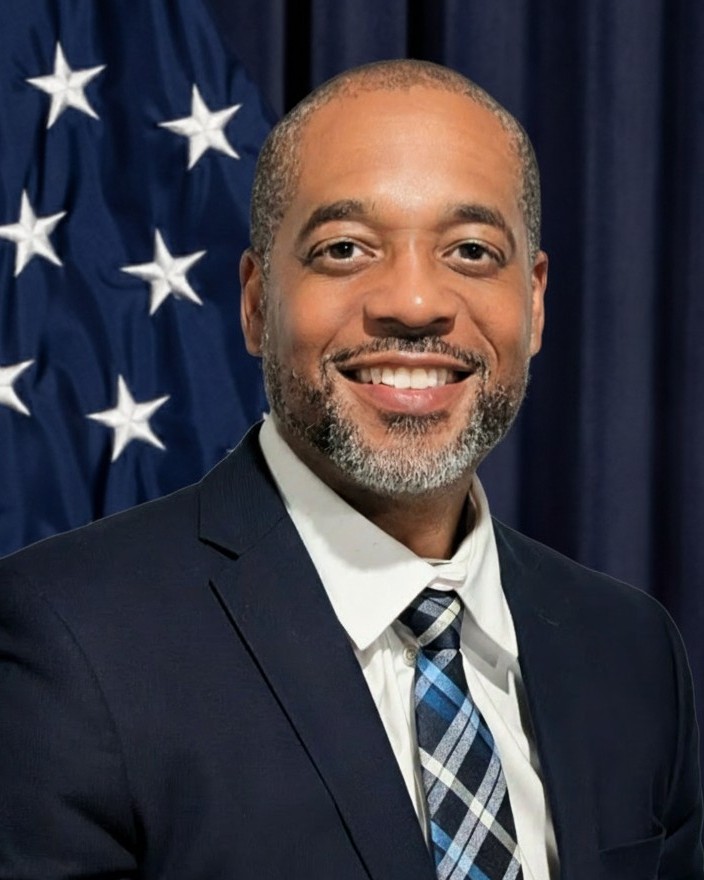Plenary Session
Schedule | Wednesday, January 7, 2026
| Time | Event |
|---|---|
| 8:20 - 8:40 | Welcome, Introductions, and USNC-URSI, USFRS, & NASEM Updates |
| 8:40 - 9:35 | Plenary #1: Dr. Mickey Batson |
| 9:35 - 10:00 | USNC-URSI Awards |
| 10:00 - 10:20 | Break |
| 10:20 - 11:15 | Plenary #2: Dr. Paul Ransom |
Plenary Speaker

Title: Remote Observation and Sensing of ElectroMagnetic Anomalies (ROSEMAry)
Dr. Mickey Batson
Intelligence Advanced Research Projects Activity (IARPA)
Abstract
Better understanding of the atmosphere depending on input parameters such as the solar zenith angle, continues to advance, however, characterizing the physics and chemical properties of the 50 - 100 km part of the atmosphere is a difficult task. The ROSEMAry Team will explore the critical process of guiding this investigation.
We will specifically consider how integration of transient energetic events like lightning discharges, meteors, etc., may affect the electrochemistry and energy balance in the 50 - 100 km part, of the atmosphere and could lead to better prediction of propagation.
Approximately, 44,000 tons of meteoritic debris collides, with the earth, on a daily basis. Nearly, all that material is vaporized, in the atmosphere, leading to well defined metallic layers between about 85 and 105 km altitude. These dense temporary clouds, also called sporadic E Layers, significantly impact radio communication and navigation systems. They also couple, with atmospheric winds and tides, linking the troposphere and mesosphere with the ionosphere, allowing lightning discharges, to impact, the metallic layers above. But meteors may have other impacts, including contributing, to the overall energy balance, in the earth-ionosphere system. After nearly 100 years, of investigation, there is still a lack of scientific consensus on the existence, of meteor EM emissions and their impact. Our focus, in ROSEMAry is to analyze data, from global research grade ELF/VLF receiver stations, with thermal and optical images and determine, if and how meteors interact, with the ionosphere plasma, to produce low frequency emissions and how such emissions could advance our understanding, of ionosphere processes.
Biography
Dr. Mickey Batson joined IARPA in March 2024. In his current assignment as a Program Manager, Dr. Batson focuses on areas of scientific research that includes electromagnetics, ionosphere geophysics, ionosphere chemistry, and plasma physics.
Prior to joining IARPA, Dr. Batson worked as a research engineer at the NSA Laboratory for Telecommunication Sciences from 2013 to 2024. While there, he investigated electromagnetic anomalies occurring within the ionosphere and researched and supported propagation modeling efforts for low frequencies.
Dr. Batson graduated from the Naval Postgraduate School with a doctorate in electrical engineering and a master's degree in communications engineering.
Plenary Speaker

Title: Unlocking the Spectrum: How Policy and Innovation Can Deliver Spectrum Access for All
Dr. Paul Ransom
Office of Spectrum Management
Abstract
As global demand for wireless connectivity continues to surge, the way we manage and use the radio frequency spectrum is entering a period of rapid change. This keynote will explore the critical role of the National Telecommunications and Information Administration (NTIA) and its Office of Spectrum Management (OSM) in guiding this transformation.
We'll look ahead to the studies required under the One Big Beautiful Bill Act, outlining their goals and the potential impact they could have on future spectrum policy. While these studies are still in the planning stages, they represent a pivotal opportunity to shape how spectrum is accessed and shared in the years to come.
A particularly exciting area of innovation is the rapid commercialization of space-based communications. With a renewed regulatory focus on space-streamlining satellite licensing, updating orbital debris rules, and opening up vast swaths of satellite spectrum-new services are emerging that promise to reshape global connectivity. Among the most promising is direct-to-device (D2D) satellite service, which is already enabling basic emergency communications and messaging directly to consumer smartphones. These early offerings, driven by partnerships between mobile and satellite operators, are expected to expand dramatically, bringing us closer to a future where seamless, global, device-level connectivity is a reality. Finally, we'll highlight the importance of dynamic sharing and integration of artificial intelligence and machine learning and how these innovations are opening new possibilities.
Biography
Dr. Paul Ransom is the Acting Chief of the Strategic Planning Division in the Office of Spectrum Management, the Division and Office of Spectrum Management lead national efforts to shape the future of spectrum policy and planning. He currently chairs the Spectrum Relocation Fund Technical Panel, a congressionally mandated body that approves funding for spectrum research and engineering studies aimed at improving the effectiveness and efficiency of federal spectrum use. The panel also ensures federal spectrum transition plans support auction timelines, promote relocation or sharing of spectrum, and enable the recovery of federal investments.
Dr. Ransom served as the technical lead for the 2024 National Spectrum Strategy and Implementation Plan, a landmark initiative that reflects his leadership and deep expertise in spectrum management. Since joining the division in 2020, he has played a central role in federal spectrum repurposing efforts and serves as the NTIA liaison to the National Science Foundation's Spectrum Innovation Initiative, supporting research and innovation in advanced spectrum technologies.
With over 20 years of federal service, Dr. Ransom brings a wealth of experience across defense, science, and telecommunications domains. He began his career at the Naval Surface Warfare Center in Bethesda, Maryland, conducting advanced research in electromagnetic materials for radar cross section (RCS) reduction and performing both field and laboratory RCS measurements. He later served as a Program Officer at the Office of Naval Research in the Sea Weapons and Warfare Department (now the Advanced Naval Platforms Department), and as Chief Technologist in NOAA's Radio-Frequency Interference Monitoring System Project Management Office, supporting the National Environmental Satellite, Data, and Information Service.
Dr. Ransom holds a B.S. in Electrical Engineering from Southern University and A&M College, an M.S. in Electrical and Computer Engineering from Georgia Tech, and a Ph.D. in Electrical and Computer Engineering from the Catholic University of America.





